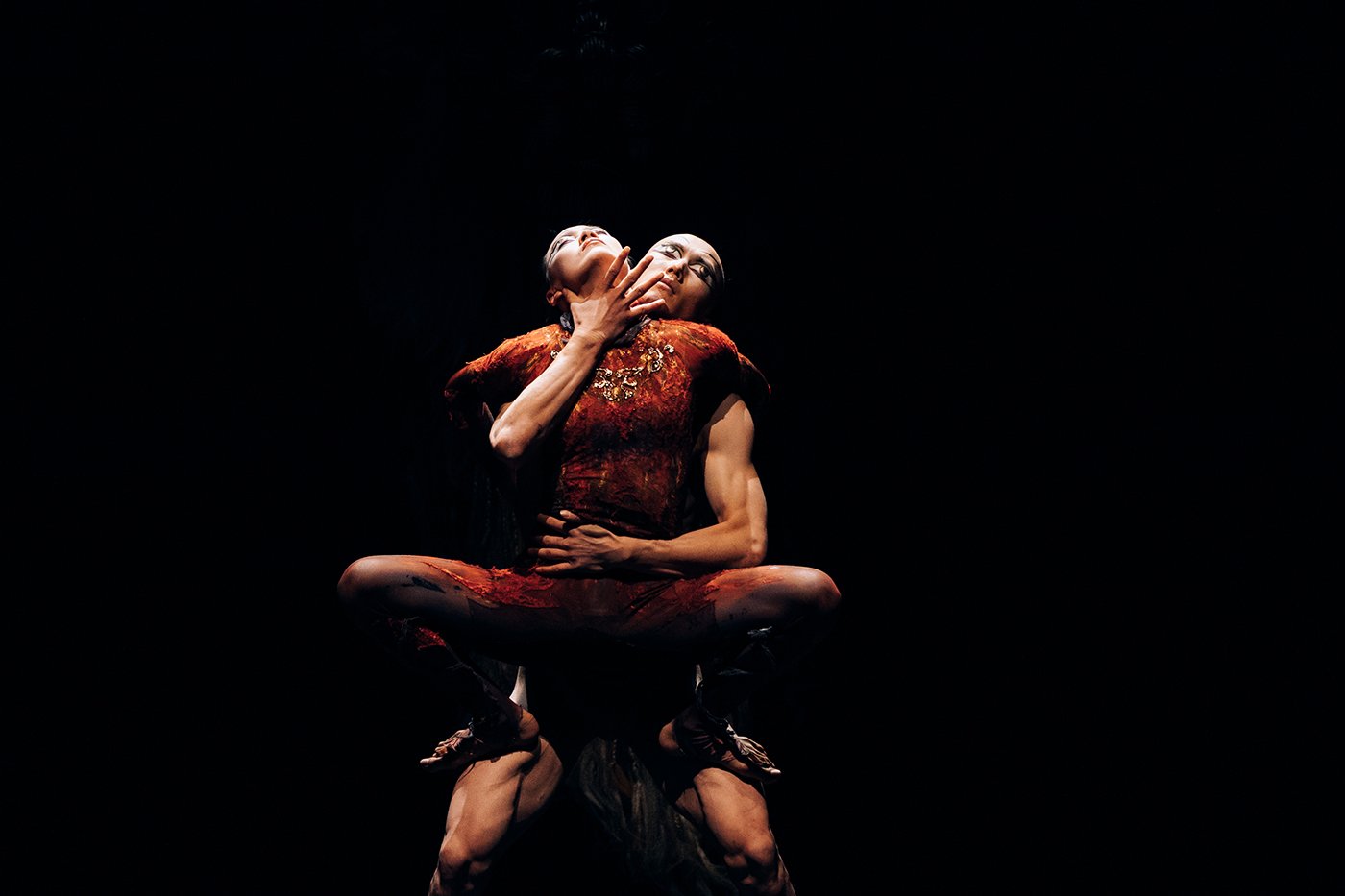The Rite of Spring by Russian composer Igor Stravinsky is considered one of the seminal works of the 20th century. Originally written for the 1913 season, it has since been used and adapted by numerous artists – including Walt Disney for his 1940 movie Fantasia. Here at the Edinburgh International Festival, we have Yang Liping‘s adaptation. The pagan sacrificial ritual ensures rebirth of spring, however here it infuses with Chinese and Tibetan Buddhist imagery and practices.
The resultant mix is a beautifully conceived piece. The score is unique in its ability to make the listener feel unsettled, yet it is difficult to pinpoint why. This piece takes its time in the beginning. It begins with a meditative act and the dozen dancers are aroused slowly as the tempo picks up. The negative energy is portrayed by a giant Chinese lion, a huge beast to whom the sacrifices must be offered. The costumes are a visual delight – long flowy robes that fan out into peacock tails – all bright colours – with rich crowns studded with different animals. The set design lends itself well to the storytelling; there is a giant half bowl, which rises and falls and light on it conjures ethereal dreamscapes.
There is a distinct feel of tantric rituals. A scene where an excited woman in red steps over her lover’s chest looks like a distinct nod to Goddess Kali from Hinduism; whether this is intentional is unclear, but Buddhism began in India and sects of Hinduism incorporate pagan rituals, meaning it could be a potential link. This would be totally foreign to the unfamiliar and it is hard to see this show make a real impact in the minds of a diverse global audience.
However, the audience have to make sense of a lot of the action onstage and what it means. There is a monk who keeps walking about, strewing around and picking up Madarin characters. But without knowledge of Mandarin, there’s no way of understanding what they say when they are held up as words (or are they phrases?). Preceding the sacrifice, there are some cult-like scenes where the women self-flagellate, as if possessed. While this is all well-executed in terms of art, there isn’t enough in it to be compelling in terms of bridging a gap between the East and the West. With too much of the symbolism lost on its Western audience, Rite of Spring struggles to surpass its predecessors in offering a new take of Stravinsky’s work.
